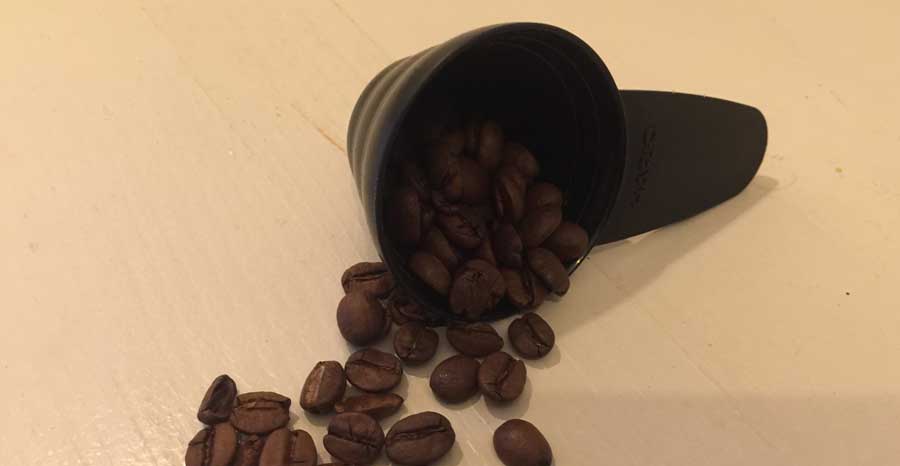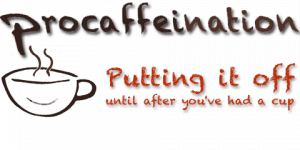People often wonder what the proper ratio of coffee to water is for brewing. They might know how to make their own cup in the morning, but when visitors come over and they need to make ten or twelve cups in the pot, they need some help with the math. If you would rather use metric measurements, try this post. It’s a lot easier.
| Brewing Ratio (The Simple Way) | ||
| Cups to Brew | How Much Coffee to Use | Cups of Water |
| 1 | 2 TBS | 3/4 |
| 2 | 4 TBS | 1 1/2 |
| 4 | 8 TBS | 3 |
| 6 | 12 TBS | 4 1/2 |
| 8 | 16 TBS | 6 |
| 10 | 20 TBS | 7 1/2 |
| 12 | 24 TBS | 9 |
The short and sweet answer is the “Golden Ratio” – two tablespoons of coffee for every six ounces of water will give you an acceptable cup of coffee. But that is just the beginning; if you really want to dial it in, I have some tips to make you the most knowledgeable coffee snob in the neighborhood.
The table above will give you a good idea about how to brew an acceptable pot of coffee. And that’s fine if you are a normal coffee person. But if you really want to elevate your game we need to get into the weeds.
What is the correct amount of water?
Get the Measurement right
What is the correct amount of coffee?
Brewing Ratio Better Way Chart
What is the correct amount of water?
The first thing you might notice is that the table above says to use ¾ cup of water to brew 1 cup of coffee. What’s that all about? Surely the liquid doesn’t magically expand. Well, the difference comes from the fact that a cup of water by US measure is 8 fluid ounces, but a “cup” of coffee is 6 fluid ounces. Although this difference might sound odd, the reason for it is because coffee is usually served in a “teacup” and a teacup contains six ounces. Now, if you like your coffee in a mug, that is going to come in at 10 – 12 fluid ounces depending on the size. A Starbucks Venti? Well, that’s 20. FYI, those little European demitasses that they use for espresso are 3 fluid ounces (Get it? demi = half and tasse = cup. Three is half of six, which makes it a half cup!). With all these confusing numbers, it is little wonder that we run into difficulty when we try to brew a proper cup of coffee.

Clearly they are different sizes and the demitasse is much smaller.
Get the measurement right
Since there is such a large variation in the amount of liquid that might be found in a “cup,” we must accurately determine how much water we are actually dealing with. So, in order to get the correct coffee to water ratio in the brewing process, we have to use a measuring cup to find out our numbers.
- What is the volume, in ounces, of your cup?
- What is the volume, in ounces, of your pot?
- What do the gradations on the pot represent?

Swiped from HulaDaddy.com
I know, the pot says “12,” but 12 what? 12 teacups or 12 US cups? Or maybe it is just 12 of whatever the guy who designed the pot had laying around. The bottom line is, you don’t really know until you measure it. Once we get that figured out, we are ready for the second part of the ratio: the correct amount of coffee.
What is the correct amount of coffee?

Using a volume measure like “tablespoons” is not the most accurate way to determine how much coffee you have. Beethoven is known to have insisted on 60 beans for each cup of coffee. The key facts for which these two methods fail to account is the that some coffees are less dense than others and coffee beans are not all the same size! Bar none, the best way to get the right amount of coffee is by weight. Three ounces (by weight, not the same as a fluid ounce) of dry, ground coffee brewed with 6 cups (48 fluid ounces) of water will give you 8 cups of the “golden ratio brew.” So, break out the kitchen scale if you really want to get it right
Brewing Ratio Better Way Chart
| Brewing Ratio (The Better Way) | ||
| Cups to Brew | How Much Coffee to Use | Water |
| 1 | 3/8 Ounces | 3/4 Cups |
| 2 | 3/4 Ounces | 1 1/2 Cups |
| 4 | 1 1/2 Ounces | 3 Cups |
| 6 | 2 1/4 Ounces | 4 1/2 Cups |
| 8 | 3 Ounces | 6 Cups |
| 10 | 3 3/4 Ounces | 7 1/2 Cups |
| 12 | 4 1/2 Ounces | 9 Cups |
Of course, in the end, all of this fussing about does is just give you a baseline. Brew a cup and see what you think. Then adjust the amount of coffee used to give you the strength you desire. Then, once you have zeroed in on your brewing preferences, you can just eyeball the amount in your scoop every morning. It would probably be a good idea to check your measurements when you switch coffees; remember, every coffee is different and the volume of grounds might not be the same each time. After all, if you are going to be semi-serious about your coffee brewing technique, then you are going to have to decide to make a little extra effort and take a little extra care and time.
What is the correct amount of water?
Get the Measurement right
What is the correct amount of coffee
For extra credit
For a good example of why metric measures are easier than imperial measures, see the metric version of this post. Using liters and grams makes it much easier to get to the ideal ratio of water to coffee and the ideal cup.

